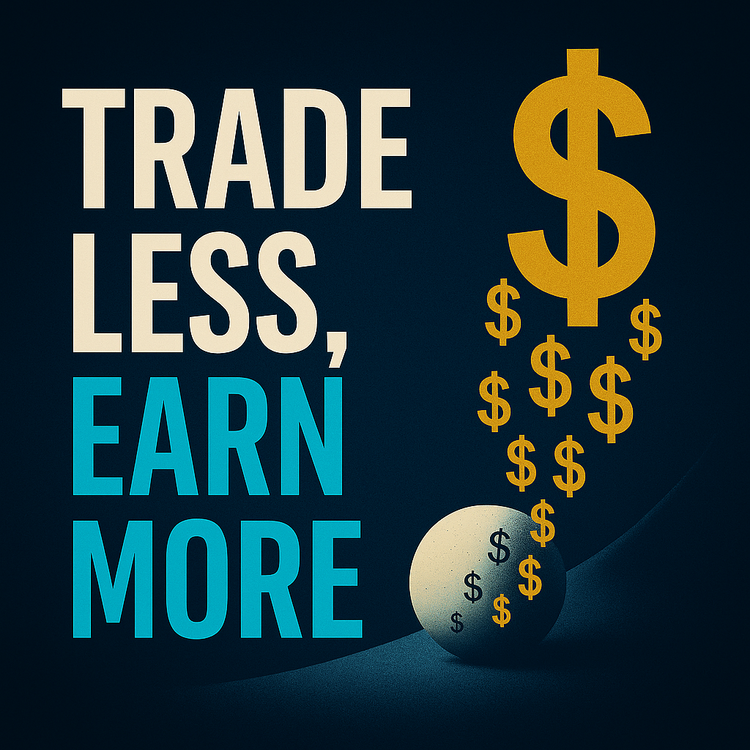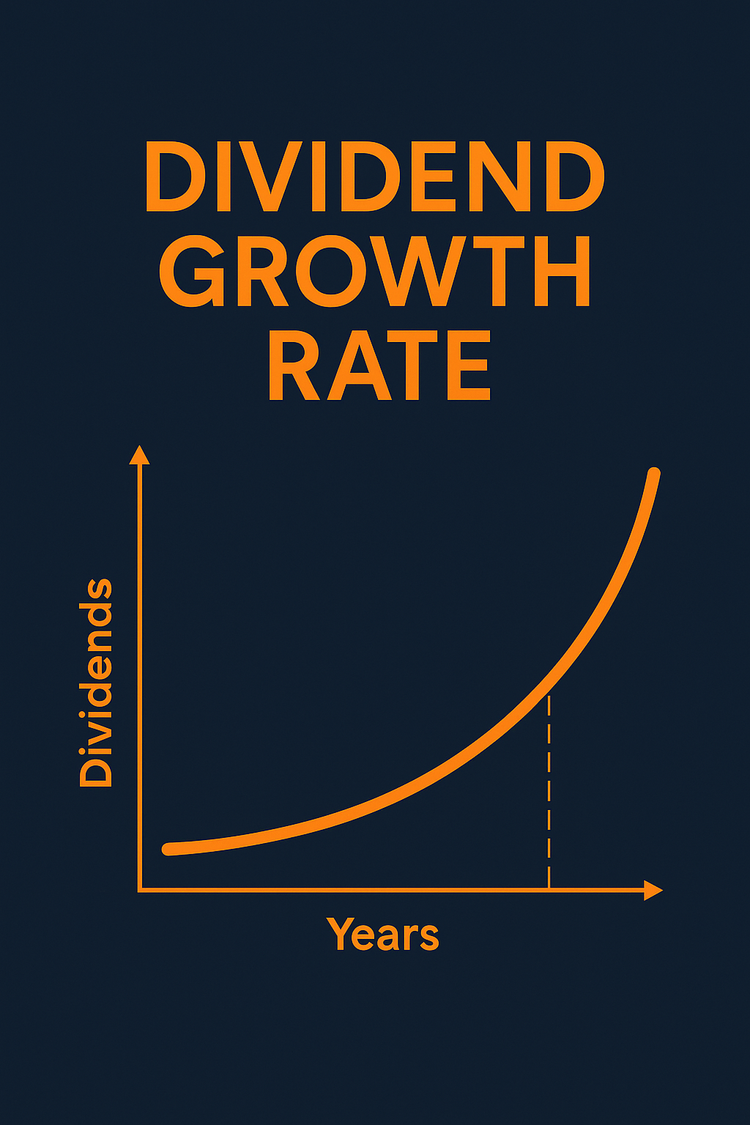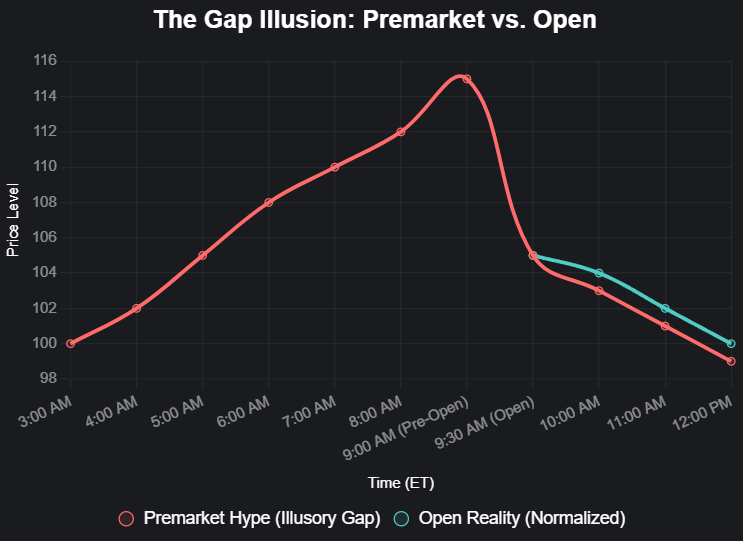The Market Isn't a Casino. Stop Treating It Like One.

Over 35 years, I’ve seen markets make and break fortunes. In 2021, X hyped meme stocks, luring folks to bet rent money and lose big. The market isn’t a slot machine—it’s a machine that rewards discipline and punishes impulse. Treat it like a business owner, not a gambler, and compounding can build real freedom: a $200/month investment at 7% over 40 years grows to ~$500,000, funding retirement or legacy. Here are eight traps to dodge, grouped by type, with practical steps to invest wisely. We’ll cover emotional pitfalls first, then structural ones, and finally product risks.
Emotional Traps: Master Your Mind to Win the Game
1. Stop Trying to Time the Market
Predicting peaks and valleys is a losing bet that preys on overconfidence. In 2000, dot-com darlings like Pets.com soared to absurd valuations, then crashed, wiping out speculators. Zoom surged to ~$590 in 2020 amid pandemic hype, only to slide below $100 by 2022. In 2024, NVIDIA (NVDA) rocketed over 150% on AI mania, but missing just a handful of its best days crushed long-term returns—historically, the S&P 500’s top days often follow the worst. Guessing tops and bottoms burns more portfolios than it builds, amplified by recency bias where recent wins fuel bad bets.
Action: Automate investments starting today. Put $200/month into a low-cost S&P 500 ETF (VOO, IVV, SCHX). Dollar-cost averaging buys more shares on dips—review quarterly, no crystal ball needed.
2. Ignore Headline Noise
Fearful headlines push investors to sell at the worst times, feeding anchoring bias to outdated views. In March 2020, the S&P 500 plummeted 34% peak-to-trough during COVID panic, yet hit new highs by August. The Silicon Valley Bank collapse in March 2023 sparked fear, but the S&P still gained over 20% that year. Recent 2024 inflation spikes (CPI ~3%) hammered bond portfolios, with long-term Treasuries down ~10% as yields rose—but markets priced it in and rebounded. Media thrives on clicks, not truth, while algorithmic trading adds volatility spikes. Chasing news often means selling low and missing recoveries.
Action: Set a rule: “Buy monthly, rebalance annually or at 5% drift.” Stick it on your fridge. Skip pundits; check a company’s investor relations page and earnings reports for facts.
6. Avoid the Herd
Crowds chase hype and buy at peaks, driven by FOMO and social media echo chambers on X. ARK Innovation (ARKK) soared in 2020 on tech optimism, then crashed over 60% in 2022 as rates rose. In 2024, the "Magnificent 7" (Apple, Amazon, Alphabet, Meta, Microsoft, NVDA, Tesla) drove 60% of S&P gains but exposed concentration risk—30% of the index weight in seven stocks. Meme revivals like GameStop (GME) and Krispy Kreme surged 200%+ on Reddit buzz, then faded fast. If revenue rises but free cash flow drops and shares outstanding increase, it signals dilution and cash burn—slow down. Algorithmic trading amplifies these swings, turning trends into traps.
Action: Check valuations: PEG ratio, EV/FCF, margins, cash flow trends. If multiples far exceed historical norms without cash to back it, wait. Read the 10-K before buying.
8. Control Your Emotions
Investing is math plus psychology—losses feel twice as painful as gains (loss aversion), per behavioral finance. Confirmation bias leads you to seek validating info, while recency bias overweights recent events. In 2022, X users chased crypto peaks, then panic-sold at lows during the bear market; 2024's crypto "winter" saw altcoins drop 40%+ post-Bitcoin halving hype. Social media amplifies FOMO buys and herd panics, with a single bad day like the S&P’s 9% drop in September 2008 derailing plans. Algorithmic trading exacerbates volatility, testing resolve. Write a pre-mortem: “What would have to be true for this to fail?” to stay sharp.
Action: Keep a journal: why you bought, when you’d sell, and a pre-mortem. Read The Psychology of Money by Morgan Housel. On volatile days, wait 24 hours and talk to a trusted person, not X hype accounts.
Structural Traps: Build a Fortress Against Hidden Risks
3. Don’t Bet Everything on One Stock
Concentration in a single stock or sector can be catastrophic, no matter how “safe” it seems—anchoring to past glory blinds you. Enron’s 2001 collapse destroyed employee retirements tied to its stock. GameStop rocketed to $483 in 2021 on X-driven hype, then crashed below $100; 2024 revivals added 200% pops before fades. Even blue-chip giants like GE lost over 80% from 2000 to 2020, and the Magnificent 7's 30% S&P dominance risks a tech tumble. Diversification protects against blowups; add international exposure (e.g., 70% US / 30% international via VXUS). Money needed in 3–5 years stays in the income sleeve or cash—separate a 3-6 months emergency fund in high-yield savings (5.00% APY).
Action: Spread risk across geographies and assets. In your 20s-30s? Try 70% stocks (50% US/20% int'l) / 20% income sleeve / 10% cash. 40s-50s? 60/25/15. 60s+? 50/30/20 (stocks / income sleeve / cash). Income sleeve = short-term Treasuries (T-bill ladder, SGOV, BIL), money market funds (VMFXX, SPRXX), or a CD ladder. For extra yield, add a short-duration credit fund (HYS, JPST, NEAR) as a satellite—credit risk ≠ cash. Keep any single fund ≤10% of portfolio, any sector ≤30%. For low-income starters (<$50k/year), begin with $50/month auto-invest.
5. Slash Fees Ruthlessly
Fees silently erode wealth, compounding like rust on iron. A 0.03% ETF like VTI/SCHB on $100k at 7% over 30 years yields ~$761k; a 1.0% high-fee fund drops it to ~$574k (25% haircut); add 15% taxes on gains, and it's ~$450k. High-fee mutual funds often underperform low-cost index funds after fees, per Morningstar data. “Free” trading apps can hide costs in wide bid-ask spreads. High-turnover, high-fee funds also compound tax pain; ETFs are generally more tax-efficient—use tax-loss harvesting to offset gains annually.
Action: Choose ETFs with expense ratios below 0.20% (VTI, SCHB at 0.03%). Use your broker’s fee screener. Watch spreads on “free” apps. If costs creep, switch platforms. Place bonds in tax-advantaged accounts (Roth IRA for tax-free growth if eligible; traditional for deductions).
7. Plan Your Exit First
No exit plan leaves you at the mercy of emotions, with no clear rules for rebalancing. Lehman Brothers’ 2008 collapse to zero crushed those who hoped for a rebound. Intel dropped 50% from 2020 to 2023, trapping buy-and-hold optimists. Margin or leverage amplifies losses—borrowing to invest is a rookie landmine that can wipe you out, as seen in 2022 crypto margin calls. Clear sell rules keep you grounded; rebalance mechanics: If stocks grow from 70% to 75% (5% drift), sell to buy bonds.
Action: Set sell rules: thesis breaks (e.g., debt spikes, negative FCF), valuations hit extremes, or a position exceeds 10% of portfolio. For traders, a 10% trailing stop can help (not for T-bills/money market/CDs); expect whipsaws in volatile names. Set price alerts. Rebalance annually or at 5% drift—e.g., sell appreciated stocks to fund bonds.
Product Traps: Vet What You Buy
4. Beware “Sure Things”
Guaranteed returns are a red flag, often hiding opacity. TerraUSD’s “stablecoin” imploded in 2022, erasing $40 billion; 2024's crypto winter saw FTX remnants and altcoins like SOL drop 50%+ on regulatory scares. Other “high-yield” crypto platforms froze withdrawals, stranding investors. If you can’t explain the product, customer, or cash flow, it’s speculation, not investing—social media hype masks risks. Compare that to Coca-Cola, with decades of transparent, steady cash flows from global beverage sales. Inflation's 2023-2024 bond hit (~10% loss on long Treasuries) shows even "safe" fixed income isn't immune.
Action: Before buying, answer: What’s the product? Who pays? Is free cash flow clear? If murky, pass. Stick to businesses with proven cash flows. For bonds, favor short-duration to hedge inflation.
Your Income Sleeve Menu (from safest to spiciest)
- T-bills / ladders (default): Government-backed, high liquidity, minimal credit risk.
- Money market funds: Stable value, next-day liquidity, expense ratios matter.
- CD ladder: FDIC/NCUA insurance to limits; match maturities to cash needs.
- Short-duration IG corporates (VCSH): Modest credit risk, low duration.
- Short-duration credit (HYS, JPST, NEAR): Higher yield, higher credit risk. Keep it small; credit risk ≠ cash.
Start Today
- Turn on auto-invest for a low-cost ETF (VOO, VTI) by end of week.
- Write sell rules and pre-mortem for every position.
- Cap single names at 10%, sectors at 30%; build 3-6 months emergency fund in ~5% HYSA.
- Set your broker’s fee filter to <0.20% expense ratio.
- Keep money needed in 3–5 years in the income sleeve or cash; tap emergency first in crises.
Bottom Line
No single position should exceed 10% of your portfolio; no sector should exceed 30%; money needed in 3–5 years belongs in the income sleeve or cash. Build a simple portfolio: 70/20/10 in your 20s-30s, 60/25/15 in 40s-50s, 50/30/20 in 60s+—where the middle bucket is an income sleeve (T-bills, money market, CDs; optional small short-duration credit like HYS). Add 20-30% international (VXUS) for geographic balance. Rebalance annually or at 5% drift. Low-cost index funds and cash-flowing blue chips, held through cycles, build wealth. Treat the market like a business, not a casino.
30-Day Checklist: Week 1: Open brokerage, auto-invest $100+. Week 2: Assess risk tolerance (e.g., can you stomach 20% drops?), build emergency fund. Week 3: Diversify with int'l ETF. Week 4: Journal positions, harvest tax losses. Avoid year-1 pitfalls: No leverage, ignore FOMO. Seek a fiduciary advisor if portfolio >$250k or life changes.
For weekly no-BS tips: Subscribe at Phaetrix.com/subscribe.
Educational content only. Not investment advice.






Member discussion